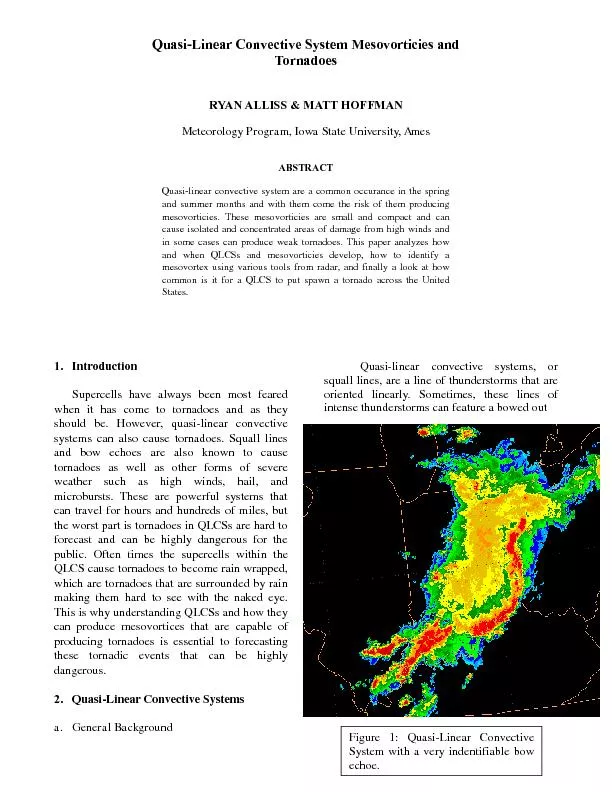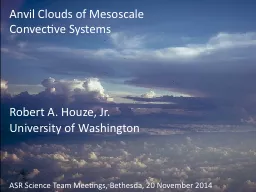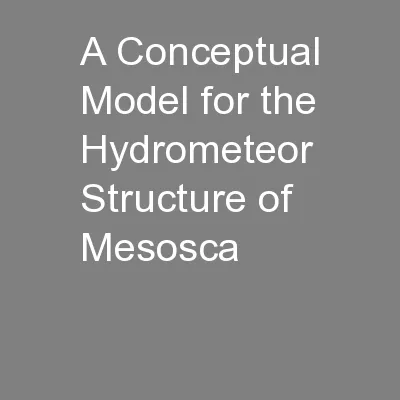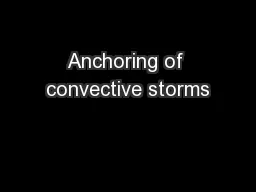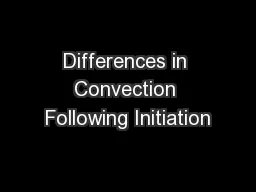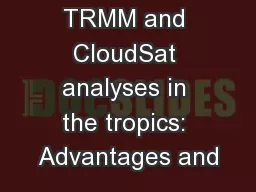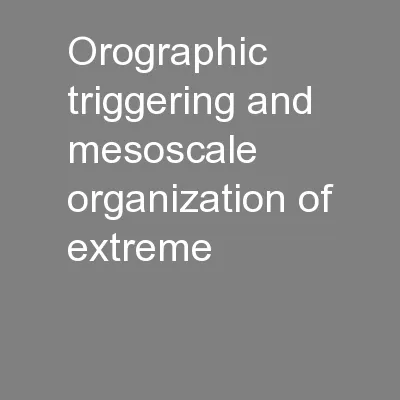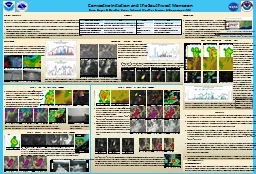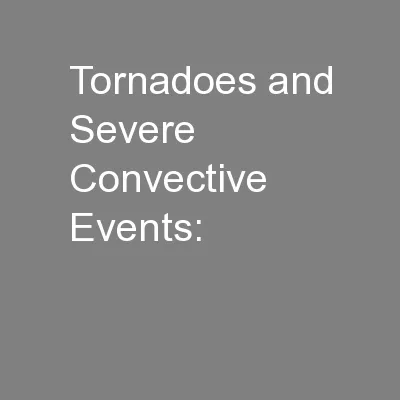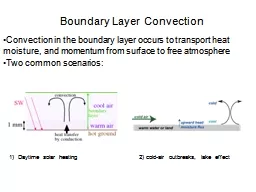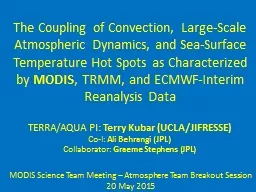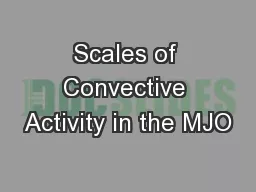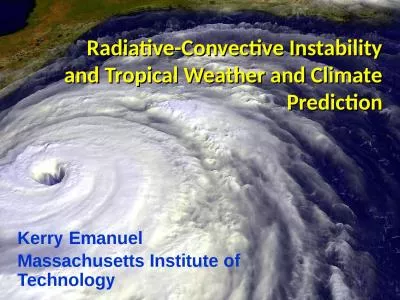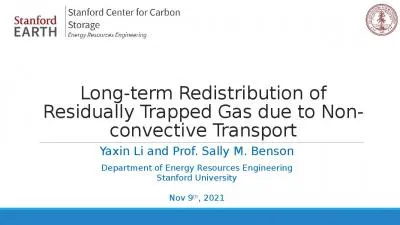PDF-near Convective System Mesovorticies and
Author : yoshiko-marsland | Published Date : 2016-05-23
Quasi Li Tornadoes RYAN ALLISS MATT H OFFMAN Meteorology Program Iowa State University Ames ABSTRACT Quasi linear convective system are a common occurance in
Presentation Embed Code
Download Presentation
Download Presentation The PPT/PDF document "near Convective System Mesovorticies and" is the property of its rightful owner. Permission is granted to download and print the materials on this website for personal, non-commercial use only, and to display it on your personal computer provided you do not modify the materials and that you retain all copyright notices contained in the materials. By downloading content from our website, you accept the terms of this agreement.
near Convective System Mesovorticies and: Transcript
Quasi Li Tornadoes RYAN ALLISS MATT H OFFMAN Meteorology Program Iowa State University Ames ABSTRACT Quasi linear convective system are a common occurance in the spring and summer months and. p.connolly@manchester.ac.uk Introduction: Convective invigoration describes a pathway by which aerosols modulate cloud evolution, precipitation and radiation (Rosenfeld et al. 2008). This idea sugges Robert A. Houze, Jr.. University of Washington. ASR Science Team Meetings, Bethesda, 20 November 2014 . Mesoscale Convective Systems. 1. 2. 3. From space. Frequency of MCS anvils over tropics. Yuan and Houze 2010. Hannah C. Barnes. Robert A. Houze, Jr.. University of Washington. Presentation by H. Barnes at Department of Meteorology, . The Pennsylvania . State University, State . Callege. , PA, August 15, 2014. Robert Warren. 2. Contents. My background. Introduction & Motivation. Project aims and methodologies. Work so far. Background reading. Boscastle. Flood. Case studies. 21/07/2010. Work going forward. Fig. 3: As in Fig. 2, but at ten days after convective initiation.. Preferred ENSO Phase within Each Composite. Fig. 1: Histogram of ONI (°C) for (a) real MJOs and (b) failed MJOs. The sample size, mean, and standard deviation of each subset are provided in the top left corner of each histogram.. Limitations. R. Houze. University of Washington. CaPPM. Meeting, JPL, Pasadena, October 1, 2014. TRMM. GPM. CloudSat . . EarthCare. TRMM and CloudSat analyses in the tropics: Advantages and . Kristen . Lani. Rasmussen. Robert A. Houze, Jr. . ICAM 2013, . Kranjska. Gora, June 6th. Convective . “. h. ot spots. ”. occur near major mountain ranges (. Zipser. et al. 2006). Most Intense Thunderstorms on Earth. Brian Guyer & Deirdre Kann, National Weather Service, Albuquerque, NM. Project Summary. OBJECTIVE: . Test the growing suite of convective initiation products to determine their potential to improve forecasts and detection of hazardous convective events during the North American monsoon season.. . Insurance Trends and Challenges in an Era of Climate Volatility. National Tornado Summit. Oklahoma City, OK. February 11, 2014. Robert P. Hartwig, Ph.D., CPCU, President & Economist. Insurance Information Institute 110 William Street New York, NY 10038. Convection in the boundary layer occurs to transport heat moisture, and momentum from surface to free atmosphere. Two common scenarios:. 1) Daytime solar heating 2) cold-air outbreaks, lake effect. MODIS. , TRMM, and ECMWF-Interim Reanalysis Data. TERRA/AQUA PI: . Terry Kubar (UCLA/JIFRESSE). Co-I: . Ali . Behrangi. (JPL). Collaborator: . Graeme Stephens (JPL). MODIS Science Team Meeting – Atmosphere Team Breakout Session. Robert A. Houze, Jr.. With contributions from:. S. Powell, M. . Zuluaga. , H. Barnes, A. Rowe. AGU Annual Meeting, San Francisco, 11 December 2013. The MJO scale. ~30-60 days. TOGA. COARE. West Pacific. Kerry Emanuel. Massachusetts Institute of Technology. Several Possibly Inter-related Enigmas of the Tropical Atmosphere. Why does moist convection often cluster?. What determines the number of tropical cyclones on the planet?. Yaxin Li and Prof. Sally M. Benson. Department of Energy Resources Engineering. Stanford University. Nov 9. th. , 2021. The long-term fate of residually trapped gas is unclear. In CO. 2. storage, a large fraction of injected gas is residually trapped in pore spaces by capillary forces..
Download Document
Here is the link to download the presentation.
"near Convective System Mesovorticies and"The content belongs to its owner. You may download and print it for personal use, without modification, and keep all copyright notices. By downloading, you agree to these terms.
Related Documents

